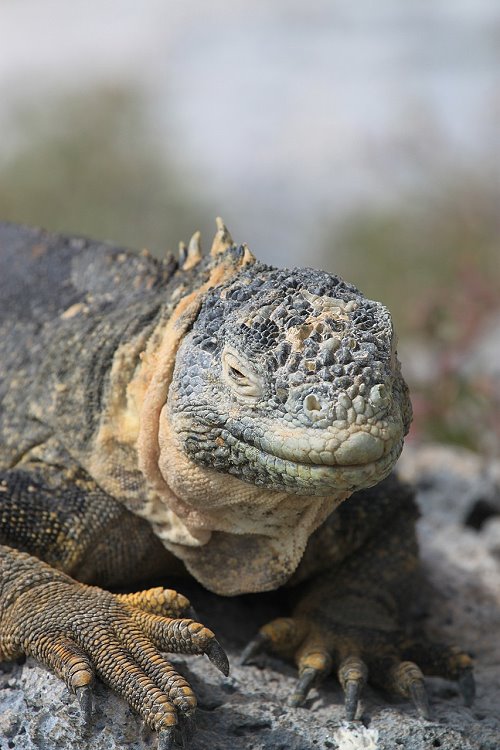Exhibition 'Charles Darwin on Land and at Sea'
 The exhibition entitled 'Charles Darwin On Land and At Sea' was on display in the library of Christ College from 21 February to 12 November 2009. The cover of the exhibition guide shows Mount Sarmiento in Argentina (1834), a watercolour by Conrad Martens (MS. Add. 7983: 32v). Martens was an artist whom the captain of the HMS Beagle, Robert FitzRoy, engaged as a draughtman towards the end of 1833 when the Beagle's original artist, Augustus Earle fell ill in Montevideo. Martens befriended Charles Darwin in a relation that lasted for a lifetime. He left the Beagle in Valparaiso in 1934 and travelled via Tahiti to settle in Sydney, Australia, in 1935. The Beagle arrived there in 1936 and FitzRoy and Darwin commissioned landscape paintings on Tierra del Fuego and the Pacific.
The exhibition entitled 'Charles Darwin On Land and At Sea' was on display in the library of Christ College from 21 February to 12 November 2009. The cover of the exhibition guide shows Mount Sarmiento in Argentina (1834), a watercolour by Conrad Martens (MS. Add. 7983: 32v). Martens was an artist whom the captain of the HMS Beagle, Robert FitzRoy, engaged as a draughtman towards the end of 1833 when the Beagle's original artist, Augustus Earle fell ill in Montevideo. Martens befriended Charles Darwin in a relation that lasted for a lifetime. He left the Beagle in Valparaiso in 1934 and travelled via Tahiti to settle in Sydney, Australia, in 1935. The Beagle arrived there in 1936 and FitzRoy and Darwin commissioned landscape paintings on Tierra del Fuego and the Pacific.
The exhibition shows a total of 129 pieces displayed largely in chronological order and starting with the family tree. The first part is focused on contextualising Darwin's stay at Christ College, including the account book, letters to William Darwin Fox from June 1828 and December 1877 and teaching materials in different subjects with particular emphasis on the meticulous drawings of botanical details by J.S. Henslow, the director of the Botanic Garden and Darwin's mentor.
The next section of the exhibition focuses on items associated with the voyage of the Beagle, such as John Milton's 'Paradise lost', London, William Pickering, 1835, Darwin's 'Journal of researches into the natural history and geology of the various countries visited by H.M.S. Beagle', London, Henry Colburn, 1839; his 'The structure and distribution of coral reefs', London, Smith, Elder & CO, 1842, his 'Geological observations on coral reefs, volcanic islands, and on South America: being the geology of the voyage of the Beagle, under the command of Captain Fitzroy, R.N., during the years 1832 to 1836', London, Smith, Elder & Co, 1851 and examples of correspondence addressed to Professor Henslow. This period and its intellectual climate focused on collecting, measuring, documenting parts of the world little known to Europeans is further illustrated by various (recent) drawings by Michael Wood on landscenes and animals, such as a 'View of coastal rainforest in Brazil' and 'Galapagos land iguana (Conolophus subcristatus)'.
 The next sections are focused of successive stages of his long and highly productive life, his publications, the most important of which is doubtlessly 'On the origin of species by means of natural selection, or the preservation of favoured races in the struggle for life'. First edition London, John Murray, 1859. Other works are on display, by Darwin himself and of contemporaries who influenced his scientific understanding, such as Charles Lyell 'Elements of geology'. London, John Murray, 1841, but also Thomas Malthus 'An essay on the principle of population', London, J. Johnson, 1803. Contemporary editions of Darwin's 'The descent of man and selection in relation to sex', vols 1 and 2, both John Murray, 1871. Darwin's fruitful relationship with Thomas Henry Huxley, a British biologist, who became known as Darwin's bulldog for his advocacy of Darwin's theory of evolution, is naturally also represented through some of his writings.
The next sections are focused of successive stages of his long and highly productive life, his publications, the most important of which is doubtlessly 'On the origin of species by means of natural selection, or the preservation of favoured races in the struggle for life'. First edition London, John Murray, 1859. Other works are on display, by Darwin himself and of contemporaries who influenced his scientific understanding, such as Charles Lyell 'Elements of geology'. London, John Murray, 1841, but also Thomas Malthus 'An essay on the principle of population', London, J. Johnson, 1803. Contemporary editions of Darwin's 'The descent of man and selection in relation to sex', vols 1 and 2, both John Murray, 1871. Darwin's fruitful relationship with Thomas Henry Huxley, a British biologist, who became known as Darwin's bulldog for his advocacy of Darwin's theory of evolution, is naturally also represented through some of his writings.
The final sections of the exhibition illustrate through several items the celebrations of his life and work in earlier times and the influence Darwin exercised on modern science and society.
The curators provided little explanatory text, supposedly because there is no shortage of original texts of the man himself and of countless commentators, collaborators and also a few detractors. The principal merit is in showing some of the original works and objects which formed CD's intellectual, social, sicentific and physical environment and within which he worked relentlessly to reconcile facts and theory and probe beyond the surface. Even the historical library space contributes to resurrecting that atmosphere. So, it's very much a delight for the initiated. All told, looking at the historical originals does not fail to create a certain emotion following on the footsteps of the great man.








